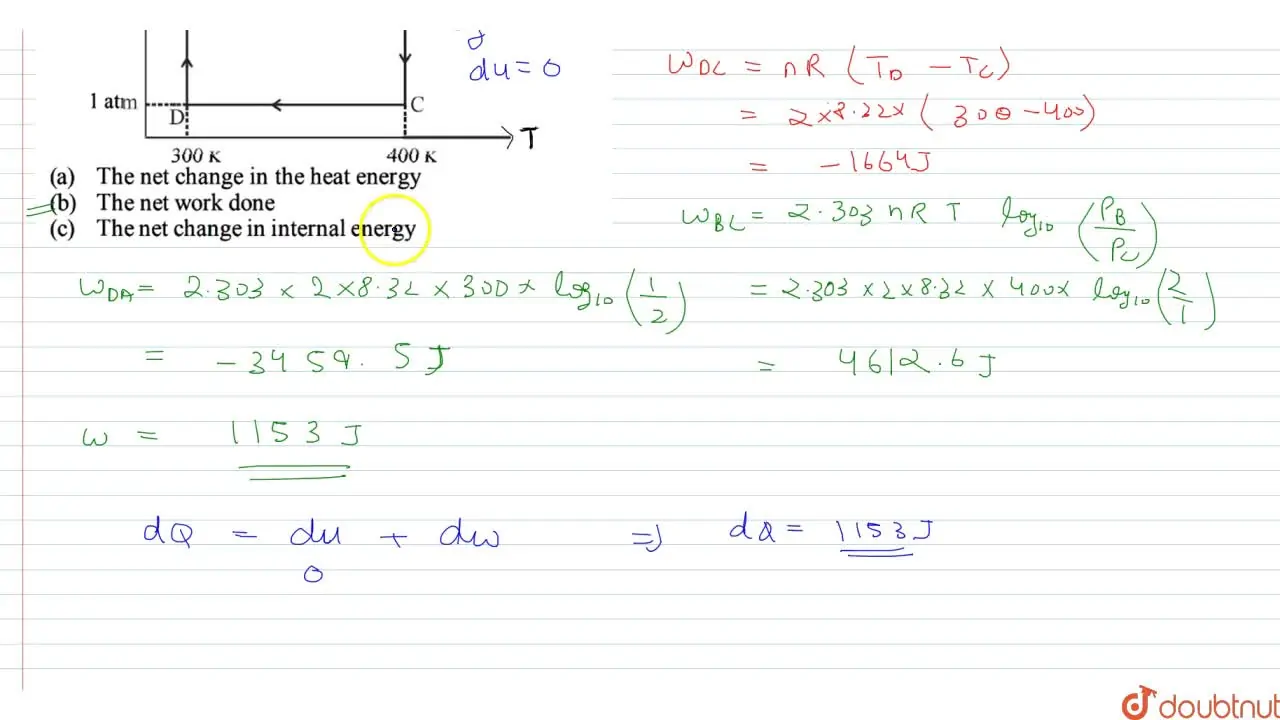Two moles of helium gas undergo a cyclic process as shown in Fig. Assuming the gas to be ideal, calculate the following quantities in this process
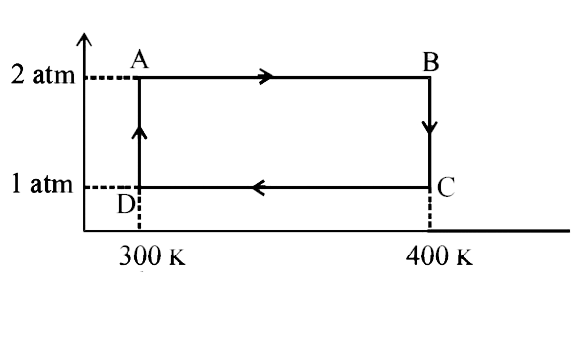
(a) The net change in the heat energy
(b) The net work done
(c) The net change in internal energy
The correct Answer is:A, B, C
Let us find out the work done in the cycle
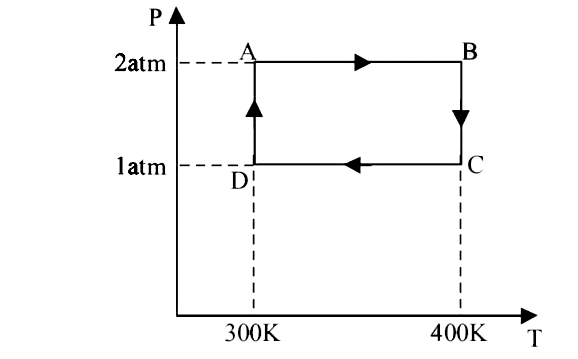
Work done from A to B (Isobaric process)
WAB=nR(TB−TA)
=nR×100=2×200×8.32=1664J
Work done from B to C (Isothermal process)
WBC=2.303nRTlog10(PB)PC
=2.303nR×400log1021=277.2nR
=554.4×8.32=4612.6
Work done from C to D (Isobaric process)
WCD=nR(TD−TC)=nR(300−400)
=−100nR=−200×8.32=−1664J
Work done from D to A (Isothermal process)
WDA=2.303nRTlog10(PD)PA=2.303nR×300log1012
=−207.9nR
=−415.8×8.32=−3459.5J
The→talworkdo≠=WABWBCWCDWDA
=1153J
(a) ΔU=Q−W
For compleat cycle ΔU=0
∴Q=W=1153J
(b) W=1153J
(c) ΔU=0. Since, the process is cyclic.
Related Playlists
Similar Questions
Two moles of helium gas undergo a cyclic process as shown in figure. Assuming the gas to be ideal. The net work done by the gas is
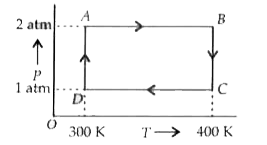 View Solution
View SolutionTwo moles of helium gas undergo a cyclic process as shown in figure. Assuming gas to be ideal, the net heat exchange in the process will be
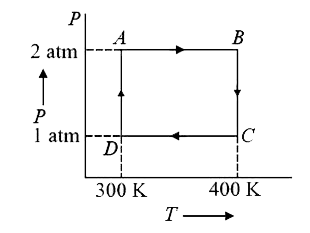 View Solution
View SolutionTwo moles of Helium gas undergo a reversible cyclic process as shown in figure. Assuming gas to be ideal, what is the net work involved in the cyclic process ?
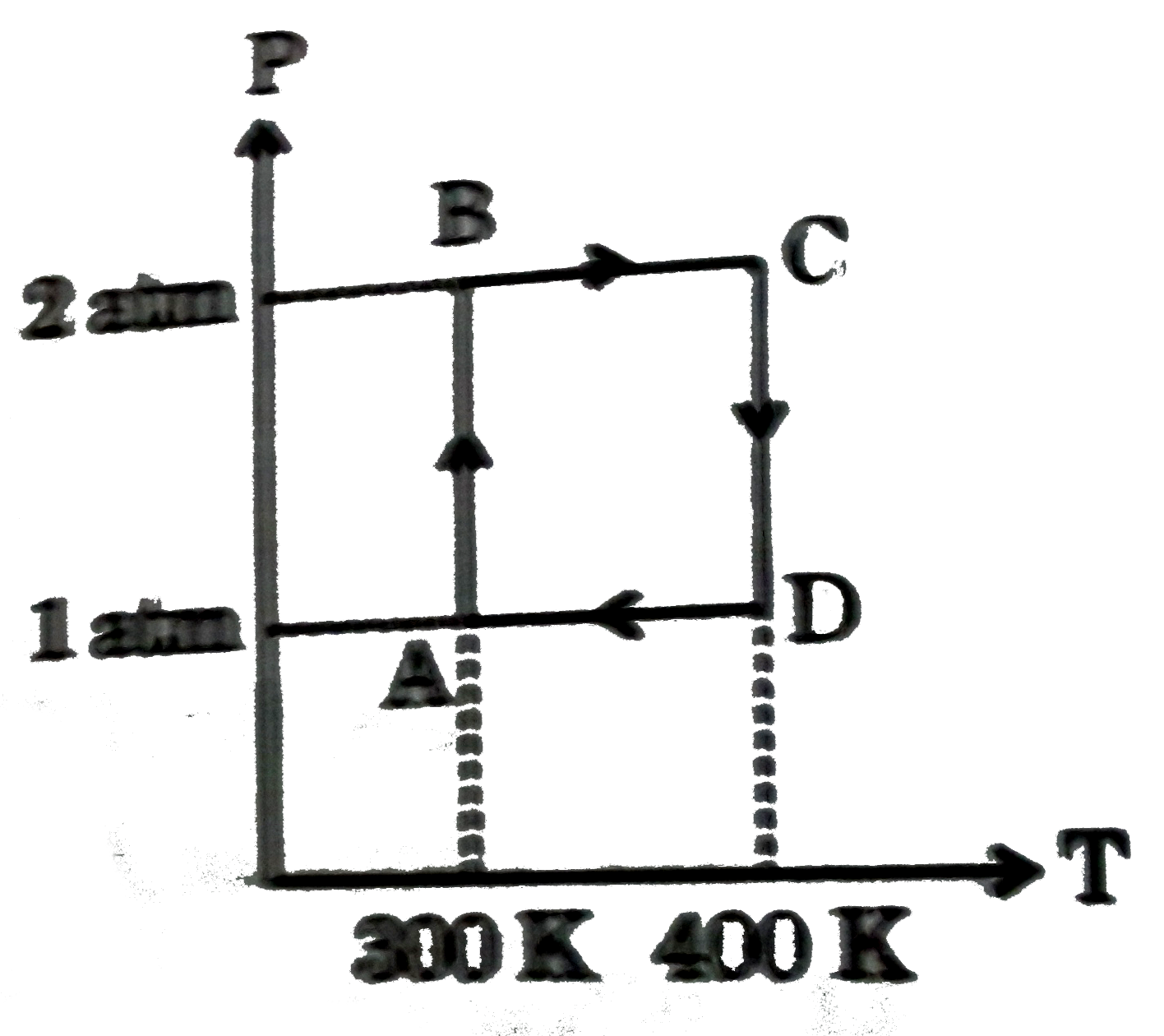 View Solution
View SolutionOne mole of Helium gas undergoes a reversible cyclic process ABCDA as shown in the figure.Assuming gas to be ideal, answer the following questions :

What is the net work involved in the process A to C :View SolutionOne mole of Helium gas undergoes a reversible cyclic process ABCDA as shown in the figure.Assuming gas to be ideal, answer the following questions :

What is the value of 'q' for the overall cyclic process:View SolutionOne mole of Helium gas undergoes a reversible cyclic process ABCDA as shown in the figure.Assuming gas to be ideal, answer the following questions :

What is the value of ΔH for the overall cyclic process:View SolutionTwo moles of an ideal monoatomic gas undergoes a cyclic process ABCA as shown in V-T diagram below:

Heat supplied to the gas during the process AB is :View SolutionTwo moles of helium gas are taken over the cycle ABCDA , as shown in the P-Tdigram

Assuming the gas to be ideal the work done on the gas in taking if from A to B is -View SolutionIn a cyclic process, the internal energy of the gas
View SolutionIn a cyclic process, the internal energy of the gas
View Solution

